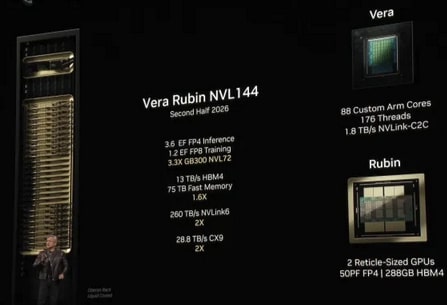Next-Gen AI: Nvidia's Dominance in the Data Center Fuels the AI Revolution
The artificial intelligence (AI) revolution is in full swing, and at its heart lies the data center – the powerhouse fueling the complex algorithms and massive datasets driving this technological leap. Nvidia, long a leader in graphics processing units (GPUs), has strategically positioned itself as the dominant force in this critical infrastructure, leveraging its cutting-edge technology to shape the future of AI. This article delves into Nvidia's data center strategy and its implications for the next generation of AI.
Nvidia's Data Center Strategy: A Focus on Accelerated Computing
Nvidia's success isn't merely about selling powerful GPUs; it's about building a comprehensive ecosystem for accelerated computing. This strategy encompasses several key elements:
1. High-Performance GPUs: The Foundation of AI
Nvidia's flagship GPUs, particularly the A100 and the recently launched H100, are the workhorses of modern AI. Their superior parallel processing capabilities are crucial for training large language models (LLMs) and running complex AI workloads. These GPUs boast significantly increased memory bandwidth and tensor cores, leading to substantial performance improvements compared to previous generations.
- Key Features: High memory bandwidth, advanced tensor cores, NVLink interconnect for multi-GPU configurations.
- Impact: Enables faster training of AI models, accelerates inference speeds, and supports more complex AI applications.
2. Software and Platform Integration: A Holistic Approach
Hardware alone isn't enough. Nvidia understands the importance of a robust software ecosystem. Its CUDA platform provides a comprehensive development environment for AI applications, ensuring seamless integration with its hardware. Furthermore, Nvidia's DGX systems offer pre-configured, optimized solutions for AI development and deployment, simplifying the process for researchers and businesses alike.
- Key Software: CUDA, cuDNN, TensorRT
- Impact: Reduces development time, simplifies deployment, and enhances performance optimization.
3. Cloud Computing Partnerships: Expanding Reach and Accessibility
Nvidia isn't solely focused on direct sales. It has forged strong partnerships with major cloud providers like AWS, Microsoft Azure, and Google Cloud, making its technology readily available to a broader audience. This approach democratizes access to high-performance computing, accelerating AI adoption across various industries.
- Key Partnerships: AWS, Microsoft Azure, Google Cloud
- Impact: Increased accessibility to high-performance computing for AI, promotes wider AI adoption.
4. Focus on Emerging Technologies: Beyond the GPU
Nvidia's vision extends beyond GPUs. The company is actively investing in and developing technologies like DPU (Data Processing Unit) and specialized AI accelerators for specific tasks. This diversification ensures that they remain at the forefront of innovation in the rapidly evolving AI landscape.
- Key Technologies: DPUs, specialized AI accelerators
- Impact: Improved data center efficiency, enhanced performance for specific AI workloads.
The Implications for the Future of AI
Nvidia's dominance in the data center has profound implications for the future of AI. Their strategy is fueling the development of increasingly sophisticated AI models, accelerating innovation across various sectors, from healthcare and finance to autonomous vehicles and scientific research. The accessibility provided through cloud partnerships is further driving widespread adoption and democratizing AI development.
Conclusion: Nvidia's Enduring Influence
Nvidia's data center strategy is not just about selling hardware; it's about building the infrastructure for the future of AI. By focusing on a holistic approach that encompasses high-performance hardware, a robust software ecosystem, strategic partnerships, and continuous innovation, Nvidia is solidifying its position as a key player shaping the next generation of AI. This continued dominance will likely further accelerate the AI revolution and its impact on various aspects of our lives. To stay updated on the latest advancements in AI and Nvidia's role, be sure to follow industry news and research.
